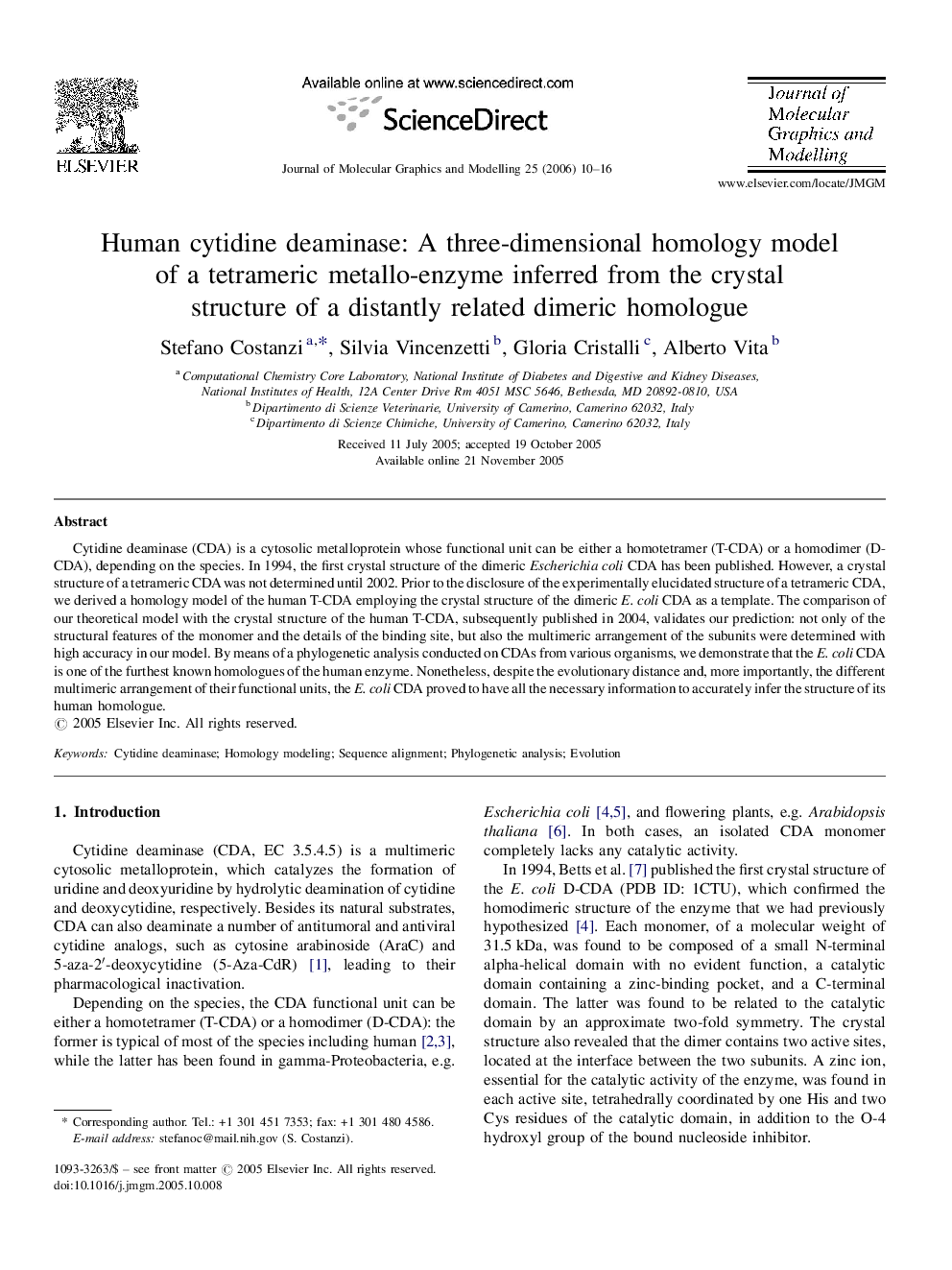| Article ID | Journal | Published Year | Pages | File Type |
|---|---|---|---|---|
| 443872 | Journal of Molecular Graphics and Modelling | 2006 | 7 Pages |
Cytidine deaminase (CDA) is a cytosolic metalloprotein whose functional unit can be either a homotetramer (T-CDA) or a homodimer (D-CDA), depending on the species. In 1994, the first crystal structure of the dimeric Escherichia coli CDA has been published. However, a crystal structure of a tetrameric CDA was not determined until 2002. Prior to the disclosure of the experimentally elucidated structure of a tetrameric CDA, we derived a homology model of the human T-CDA employing the crystal structure of the dimeric E. coli CDA as a template. The comparison of our theoretical model with the crystal structure of the human T-CDA, subsequently published in 2004, validates our prediction: not only of the structural features of the monomer and the details of the binding site, but also the multimeric arrangement of the subunits were determined with high accuracy in our model. By means of a phylogenetic analysis conducted on CDAs from various organisms, we demonstrate that the E. coli CDA is one of the furthest known homologues of the human enzyme. Nonetheless, despite the evolutionary distance and, more importantly, the different multimeric arrangement of their functional units, the E. coli CDA proved to have all the necessary information to accurately infer the structure of its human homologue.
